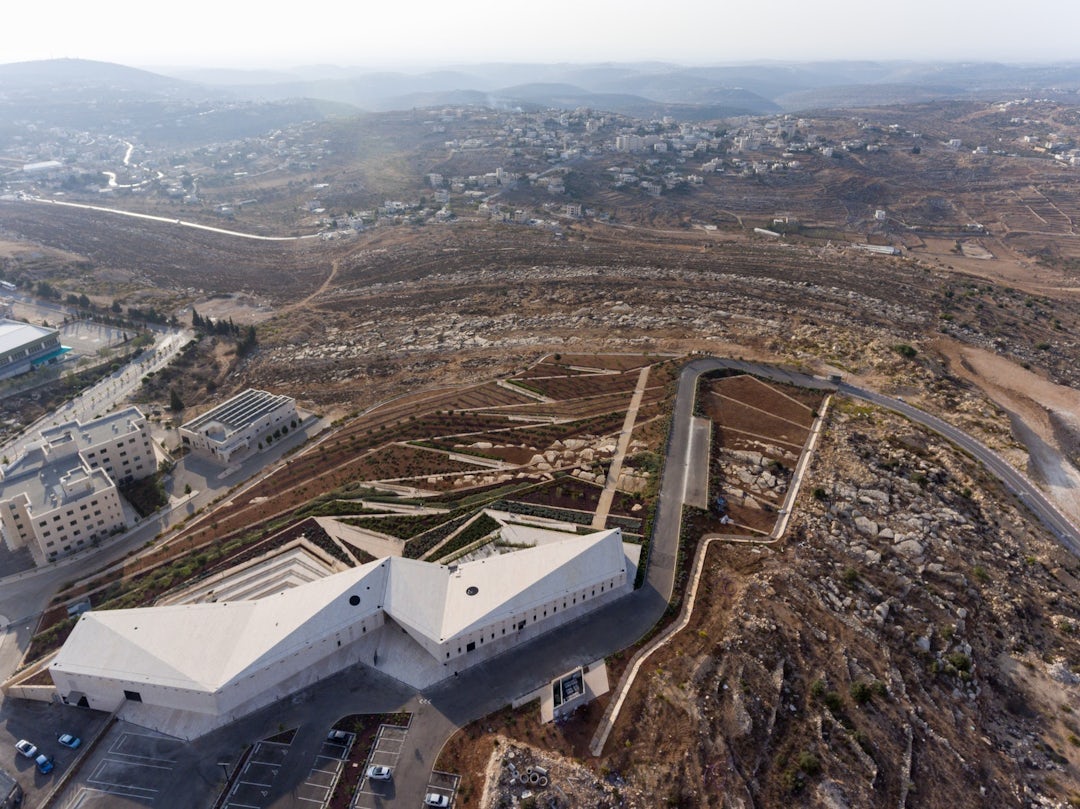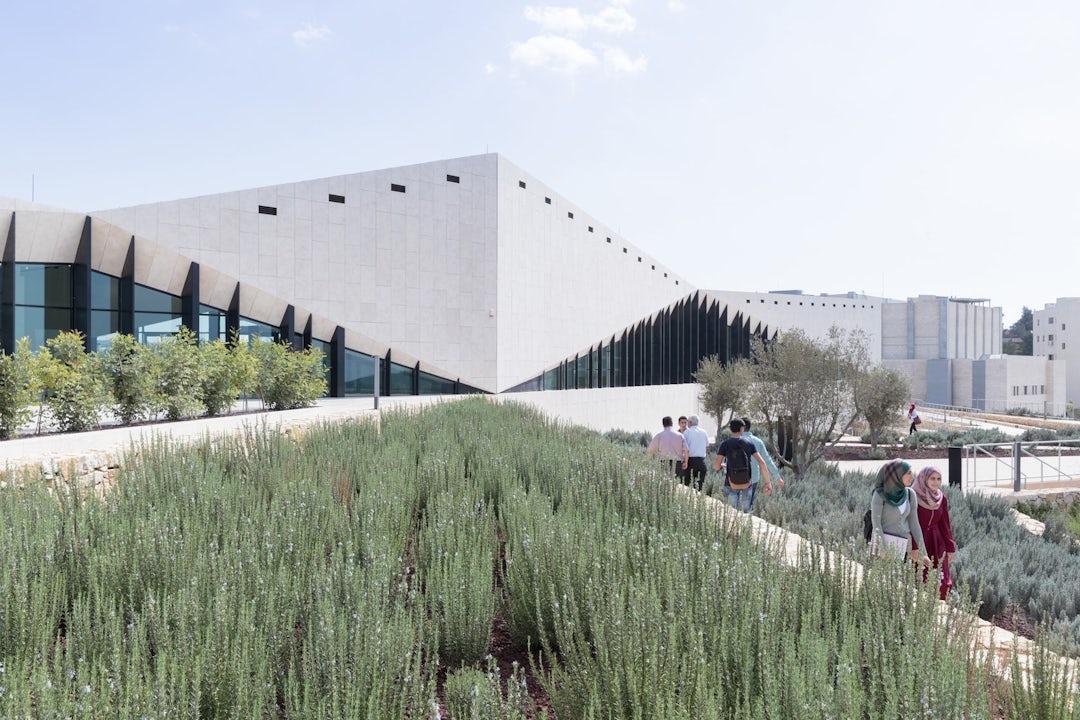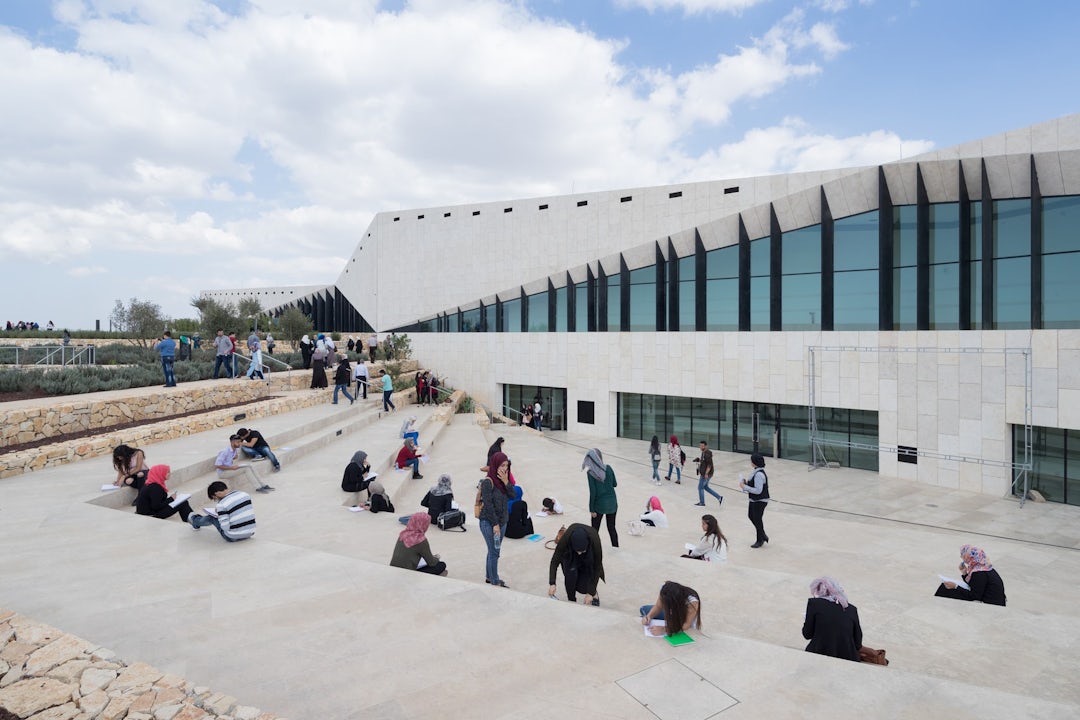https://architizer.com/blog/heneghan-peng-architects-palestinian-museum/
A Middle Eastern Masterpiece: Heneghan Peng Architects Designs New Palestinian Museum
Sydney Franklin Buildings June 9, 2017
Located 15 miles north of Jerusalem in the largely desert-like terrain of Birzeit, a new museum for the Palestinian nation sits as the first LEED-certified building in the country. Designed by Dublin-based firm Heneghan Peng Architects, the striking faceted structure and its extensive geometrical landscape by Jordanian designer Lara Zureikat was built to celebrate the history, society and culture of the region.

Phase 1 of the two-part 108,000-square-foot master plan for the Palestinian Museum was completed last year. A flagship project of the Taawon-Welfare Association, a humanitarian group that works to support communities in the West Bank and Gaza, it opened in May 2016 without featured artwork after the nongovernmental organization decided to celebrate the construction completion in spite of the museum’s canceled opening exhibition.

The limestone and marble building stretches out from south to north on a hilltop overlooking 10 acres of zig-zagging terraced gardens to the west. It currently holds 36,000 square feet of climate-controlled gallery space, administrative facilities and a cafeteria with outdoor seating on the ground floor.
Educational spaces, archives and a library exist on the lower level and look out onto a stone amphitheater embedded within the landscape. The angular façade facing the gardens is clad in a glass curtain wall with black metal fins. These glass panels decrease in height toward the center of the structure where a bold, diamond-shaped stone wall is formed out of the triangular north and west walls.

While the architecture may be on the cutting edge of contemporary design and mimics no other building found in the region, the landscape design is the focal point of the massive master plan. According to the architects, the landscape tells the story of the intervention, production, culture, environment and commerce of Palestine.

Formed as a series of cascading terraces bounded by fieldstone walls, the gardens trace the history of agriculture in the Middle Eastern territory. From the citrus brought in through trade routes to the native aromatic herbs found throughout the region, each terrace holds a theme relating to the wilderness, native plants, scrublands and grasslands as well as the incorporation of these natural elements into food and medicine. The terraces situated closer to the building include more cultured and domesticated plantings.

The Palestinian Museum is a one-of-a-kind piece of architecture that stands out not only for its design, but for its unique and somewhat desolate setting. As a public building that’s open to all and celebrates all, it is the type of space that’s not frequently found in the country nor easily achievable.

In 2011, when Heneghan Peng Architects won an international competition to design the landmark museum, it seemed like the long-awaited structure might finally be brought to life. However, major delays in the construction process occurred because of border restrictions on imported materials.
Since Phase 1 opened last year, the museum has remained empty. The institution’s inaugural exhibition is officially set to open to the public in September and will house five major shows throughout its 2017 – 2018 program.
Images via Heneghan Peng Architects
沒有留言:
張貼留言